
 |
Светият Убрус - неръкотворният образ на Христа.
Детайл от стенопис от 1259 г. в Боянската църква край София
![]()
![]()
По-долу:
Виж също:
![]()
Анчисхатски Спасител.
Грузинска икона от восък и позлатено сребро, част от триптих,
изписван през различни времена. Образът на Спасителя (най-древен) се датира VI-VII в.
![]()
![]()
Спас Неръкотворни.
Икона
от втората половина на XII в. в Новгородската църква "Св. Образ".
Днес в Третяковската галерия. Източник: icon-art.info
![]()
"Образ Господни на убрусе".
Икона от XIII в. от катедралния храм в гр. Лаон (североизточна Франция).
Източник:
cirota.ru
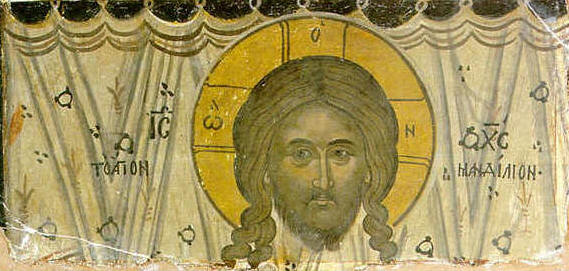
Спас Неръкотворни
Стенопис от XVII в. от Светогорския манастир Дионисиат (Dionysiou Monastery).
Източник:
Odysseus.
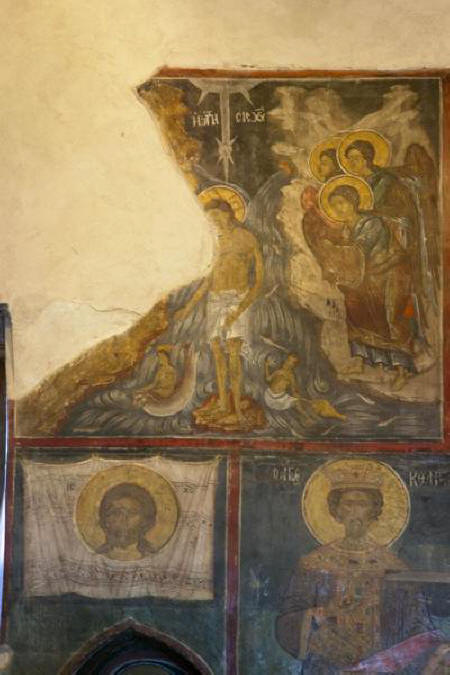
Кръщение Христово, Спас Неръкотворни.
Стенописи от храм "Св.
Стефан" в Несебър.

Светият Убрус - неръкотворният образ на Христа.
Фреска от 1259 г. в Боянската църква край София
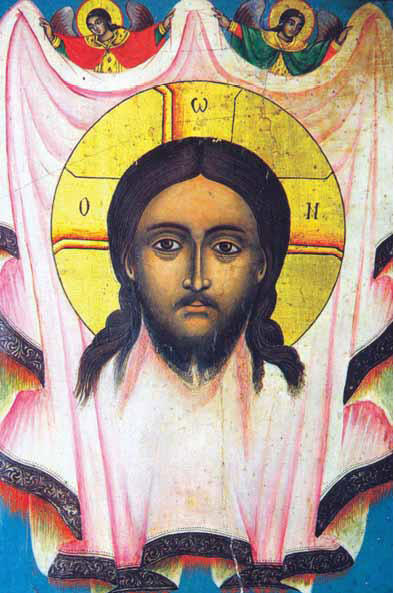
Св. Убрус.
Тревненска художествена школа, XIX век.
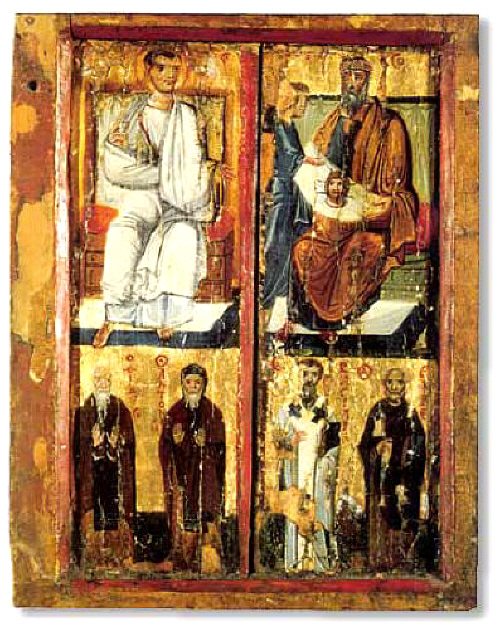
Св. ап. Тадей и Абгар.
Икона от кр. X в., Синайския манастир "Св. Екатерина" (Египет),
част от композицията
"Авгар получава Неръкотворния образ от ап. Тадей".
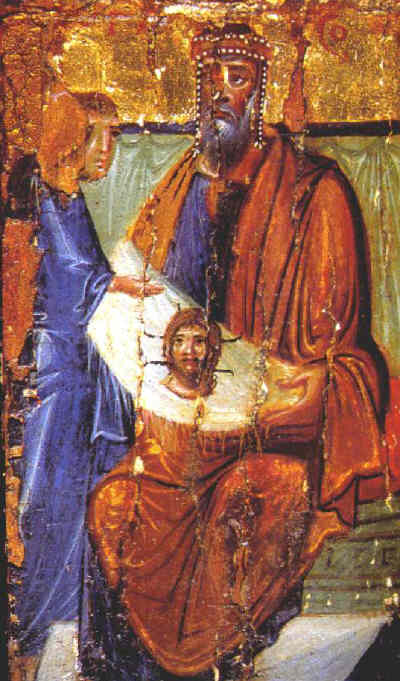
Авгар получава Неръкотворния
Образ от св. ап. Тадей.
Детайл от икона от кр. X в., манастира "Св.
Екатерина" в Синай
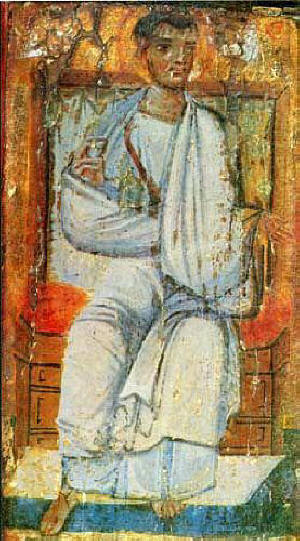
Св. ап. Тадей от
Седемдесетте апостоли.
Детайл.
Prologue of Ohrid
In the time that our Lord was preaching the Gospel and healing every disease and every infirmity among the people, there was in the city of Edessa, on the banks of the Euphrates, a certain Prince Avgar, who was riddled with leprosy. He heard of Christ, the Healer of every pain and sickness, and sent a portrait-painter, Ananias, to Palestine with a letter to Christ, in which he begged the Lord to come to Edessa and heal him of his leprosy. In the event of the Lord's not being able to come, the prince commanded Ananias to paint His likeness and bring it, believing that the portrait would heal him.
Lord replied that he could not come, as the time of His Passion was at hand, and He took a napkin and wiped His face, leaving a perfect reproduction of His most pure face on the napkin. Lord gave this napkin to Ananias, with a message to say that the prince would be healed by it, but not entirely, and He would therefore send him later an envoy who would rid him of the remainder of the disease.
Receiving the napkin, Avgar kissed it and the leprosy fell from his body, with just a little remaining on his face. Later, the Apostle Thaddaeus, preaching the Gospel, came to Avgar, healed him secretly and baptized him. Then the prince smashed the idols that stood at the city's gateway and placed the napkin with the face of Christ above the entrance, stuck onto wood, surrounded with a gold frame and ornamented with pearls. Prince also wrote above the icon on the gateway: "O Christ our God, no-one who hopes in Thee will be put to shame".
Later, one of Avgar's great-grandsons restored idolatry, and the Bishop of Edessa came by night and walled-in the icon above the gateway. Centuries passed. In the time of the Emperor Justinian, the Persian King, Chozroes, attacked Edessa, and the city was in great affliction. Bishop of Edessa, Eulabius, had a vision of the most holy Mother of God, who revealed to him the secret of the icon, walled in and forgotten. Icon was found, and by its power the Persian army was defeated.
St. Bishop Nikolai Velimirovich
(Св. Николай Велимирович Сръбски)
![]()
Св. апостол и евангелист Лука рисува Пресвета Богородица.
Детайл от стенопис в сръбския Moraca Monastery.
Източник:
byzantinesacredart.com
Виж също: